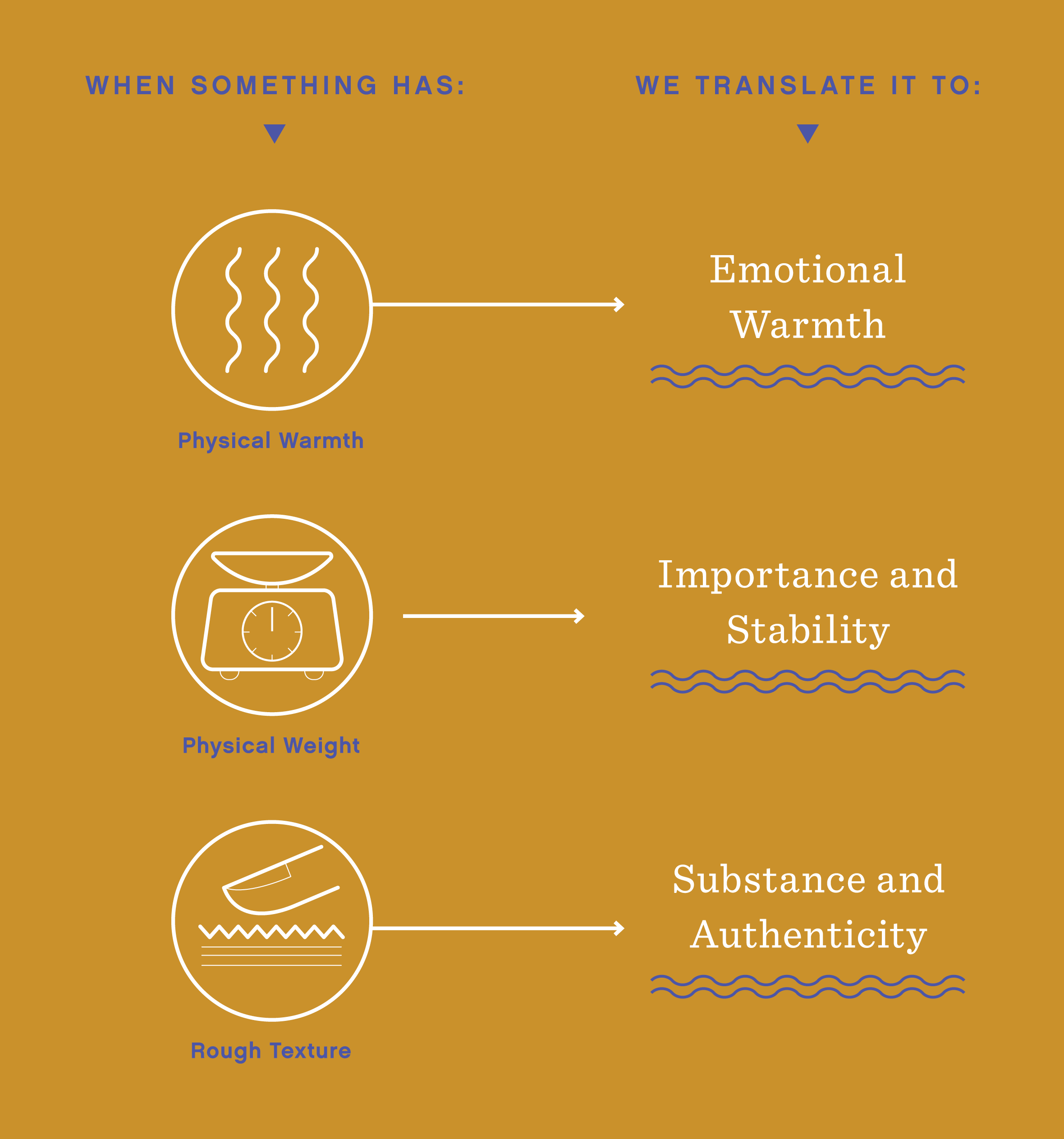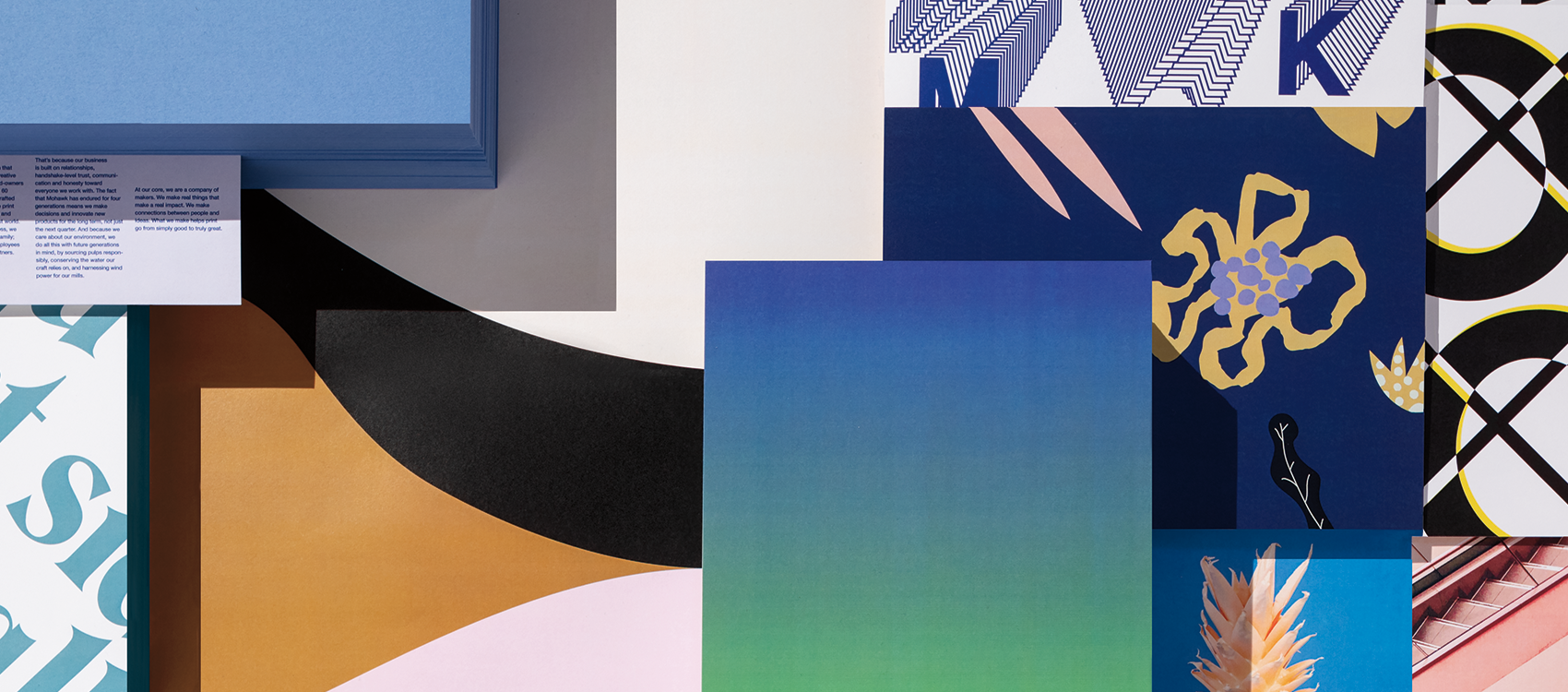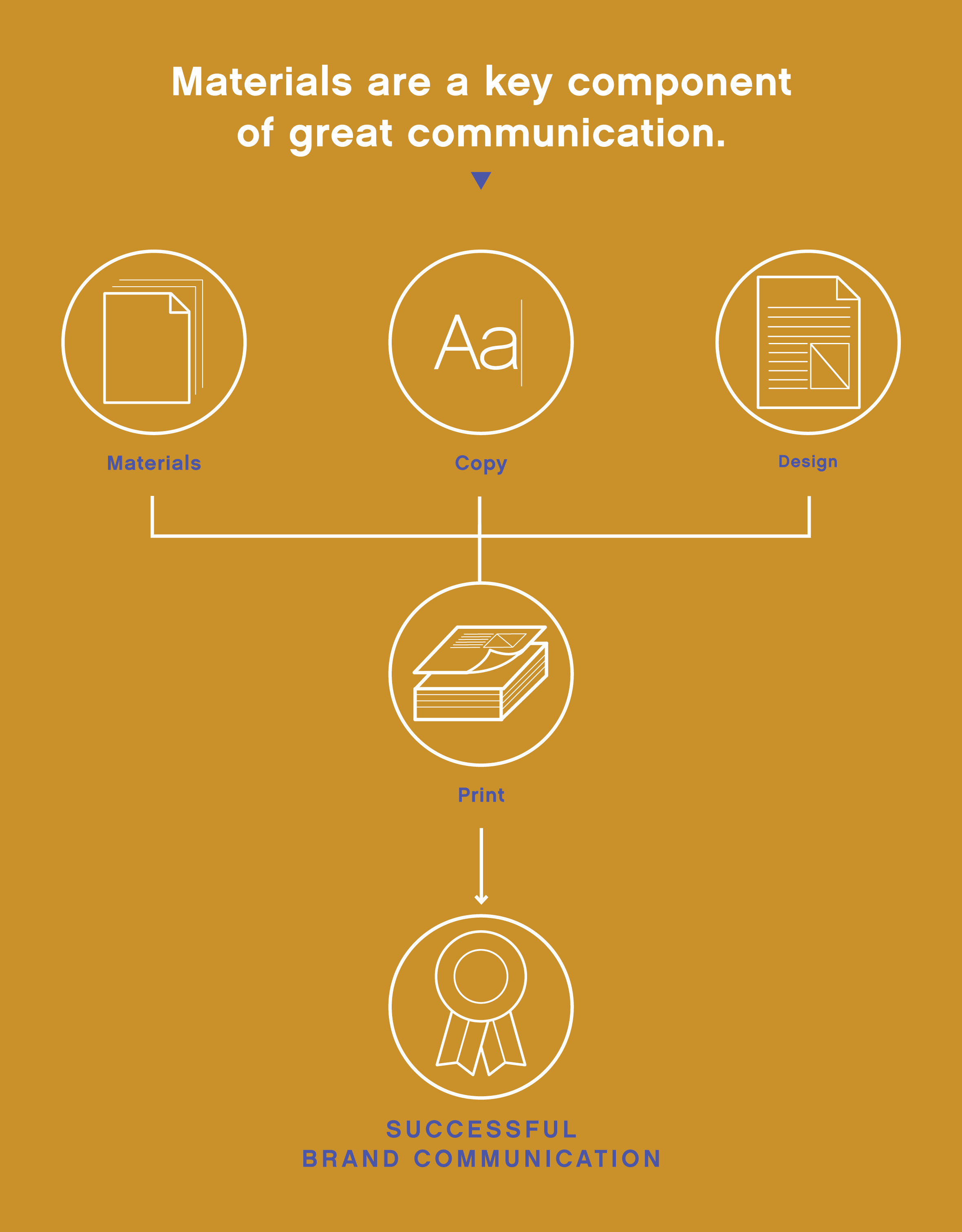There is no one way to make—no one style, point of view, tool, reason, pallete or philosophy. That’s because…there is no one maker. These different points of view exist all at once, all part of the graphic conversation we have through our work.
This is the beauty of making. We share our point of view, you share yours. We contrast, we riff, we come together. Our work speaks for us.
So, how do you choose the right paper and print process to use to communicate your work? This isn’t easy to answer, but here’s a list of things to consider.

Touch:
Materials are deft communicators, providing information that our brain (often unconsciously) translate into thoughts and emotions. It could be said that materials are the body language of printed communications. You know more about this than you may think.
With your eyes closed, try touching different printed pieces around you. Do they feel familiar? Can you guess what’s printed on the paper by how it feels? Which paper feels best?
We seldom think about touch by itself, but all materials give off different feelings. When choosing paper, always ask, how does the paper make you feel?

Embodied Cognition:
Before you read a word, touch communicates, evokes emotions and even sometimes challenges expectations. This documented effect is called embodied cognition, and it’s something we all experience.
It’s simple: Our brain translate the feeling of touch into distinct emotions and impressions. This revelation that paper contains a message makes your paper choice increasingly important.

Consider these ideas around embodied cognition when choosing paper:
- When something has physical warmth, we translate it to emotional warmth.
- When something has physical weight, we translate that into importance and stability.
- When something had surface texture, we translate that to substance and authenticity.

Message:
Materials are a pillar of communication just like copy, design and print and are able to elevate or denigrate a brand. If well considered, materials can make good communications great. If ignored, they might communicate the wrong thing entirely.

Learning to harness the diversity uncoated paper offers is an essential skill for great communications to say the right thing. Ask yourself, what message are you trying to capture with your printed piece? Some thought starters could be:
- Rugged
- Refined
- Rustic
- Sleek
- Eco-Friendly
- Elegant
- Loud
- Quiet
- Luxurious
- Reliable
- Bold
In summary, when it comes to material communication, uncoated paper gives you the most options to control your message. The variety of textures and colors available when you specify uncoated paper provide the most control over your brand and message.
Retrieved from Mohawk Connects.
